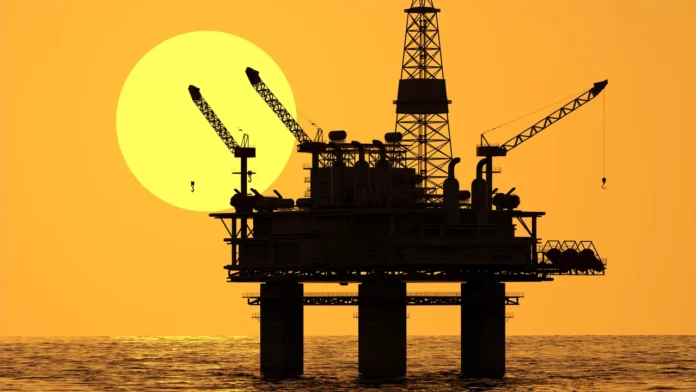Impact on environment
Crude oil is a crucial component of our daily lives as it is used to produce various petroleum products that fuel our transportation and heat our homes, as well as make essential items like medicines and plastics. Despite the benefits we receive from these products, the process of finding, producing, and moving crude oil can have a negative impact on the environment. This is why technological advancements, combined with strict enforcement of safety and environmental laws and regulations, play a crucial role in reducing these negative effects. By using cutting-edge technologies in exploration, production, and transportation, we can continue to extract oil while mitigating its impact on the environment.
Technology for drilling to produce oil
Oil exploration and drilling can have negative impacts on the environment, particularly on land and marine ecosystems. The use of seismic techniques in underwater oil exploration can harm aquatic life and the clearing of vegetation for on-land drilling can disturb the natural habitat. However, advancements in technology have allowed for more efficient and environmentally-friendly methods of oil exploration and drilling. For instance, the use of satellites and advanced seismic technologies has made it possible to discover oil reserves with fewer exploratory wells, while smaller and mobile drilling rigs minimize the affected area. The adoption of horizontal and directional drilling has also made it possible to produce oil from a larger area with just one well, reducing the overall impact on the environment.
Hydraulic fracturing
Oil production technique known as hydraulic fracturing or fracking is used to extract oil from shale and other tight geologic formations. This method has played a significant role in boosting domestic oil production in the United States and reducing oil imports. However, the process is not without its environmental impact. The fracking process requires a large amount of water and the use of potentially hazardous chemicals, which may cause water scarcity in some regions and affect aquatic habitats. Additionally, there is a risk of leaks and spills of fracturing fluids if well construction is faulty or handling is improper.
The fracking process also results in a large amount of wastewater, which may contain dissolved chemicals and other contaminants. This wastewater requires proper treatment and disposal to avoid further harm to the environment. The treatment of this wastewater is challenging due to its complexity and the large amount of water used. The most common method of disposal is by injection into deep wells, usually into saltwater aquifers. However, this can lead to earthquakes, which can cause damage and even be felt by people. It is crucial to manage and mitigate these environmental impacts effectively to ensure sustainable oil production.
Oil spills
Most oil spills are the result of accidents at oil wells or in the transportation of oil from wells to refineries. These spills can have severe impacts on the environment, contaminating soil and water and causing fires and explosions. To minimize the risk of spills and to effectively respond to them when they do occur, the federal government and the oil industry have implemented various standards, regulations, and procedures.
One significant response to oil spills was the passage of the Oil Pollution Act of 1990 in the wake of the 1989 Exxon Valdez spill in Alaska. The act requires new oil tankers operating between U.S. ports to be equipped with a full double hull, which significantly reduced the amount of oil spilled from ships in the 1990s. Additionally, the International Maritime Organization established double-hull standards for new oil tankers through the International Convention for the Prevention of Pollution from Ships (MARPOL).
The Deep Horizon disaster in 2010 prompted further action, leading to a review of drilling technologies and regulations by the U.S. government and the oil industry. To increase the oversight and enforcement of environmental regulations, the Minerals Management Service was replaced by two new organizations, the Bureau of Ocean Energy Management (BOEM) and the Bureau of Safety and Environmental Enforcement (BSEE). These measures aim to prevent future accidents and ensure effective response in the event of an oil spill.
In response to several major accidents involving trains carrying crude oil, the U.S. Department of Transportation and the Federal Railroad Administration established new standards for railroad tank cars, braking controls, and speed restrictions to reduce the potential for railroad accidents and oil spills.
Restoration of old well sites and creation of artificial reefs
Oil and gas wells are a critical part of the energy industry, but when they become uneconomic and are no longer in use, it’s crucial to properly plug and abandon them. This is done to prevent potential hazards, such as the leakage of fluids and gases, and to return the well site to its original condition. The U.S. Environmental Protection Agency is taking steps to ensure that old wells are properly plugged and abandoned to protect the environment.
An innovative solution to the problem of abandoned oil rigs is the Rigs-to-Reefs program, which involves toppling over old offshore oil rigs and leaving them on the sea floor. These artificial reefs become thriving habitats for marine life, including barnacles, coral, sponges, clams, and various species of fish. The result is an increase in fish populations and improved recreational fishing and diving opportunities. The Rigs-to-Reefs program is a unique and environmentally responsible way to address the issue of uneconomic oil and gas wells.











